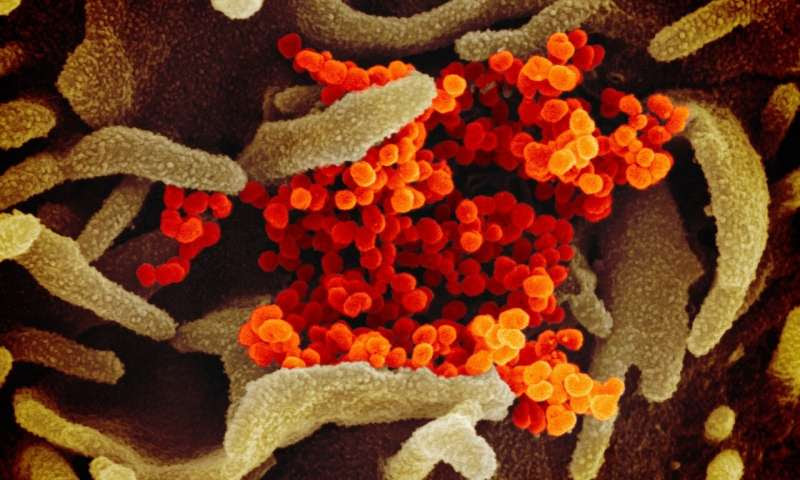by Krista Conger, Stanford University Medical Center
The Stanford Health Care Clinical Virology Laboratory has launched a diagnostic test developed for the virus that causes COVID-19.

The test is being used for patients at Stanford Health Care and Stanford Children’s Health suspected of being infected with the respiratory virus SARS-CoV-2, which is spreading globally after being first identified in Wuhan, a city in China, late last year. It is expected to deliver results within 12-24 hours.
As with all currently available tests, it’s not yet clear how long a person needs to be infected before testing positive, or whether someone who’s infected could be identified by the test before displaying symptoms.
Public health experts have indicated that prompt identification and quarantine of infected people is critical to limiting the spread of the virus, which can be deadly to the elderly or those with other health problems. The global mortality rate of the virus, according to the World Health Organization, is estimated to be around 3.4%. Because many mild cases may remain undiagnosed, the actual mortality rate may be much lower, however.
As of this morning, more than 160 people in the United States have been diagnosed; experts expect the actual number of cases nationwide is much larger. Washington and Northern California are currently most heavily affected, but cases have been diagnosed in several states.
Clinical virologist Benjamin Pinsky, MD, Ph.D., associate professor of pathology and of infectious diseases at the Stanford School of Medicine, and his team in the clinical virology lab began working on the test in late January. They spent February validating and confirming that the test meets the requirements to be a useful clinical tool.
“The test successfully identified the presence of SARS-CoV-2 in positive samples without cross-reacting with the seasonal coronaviruses or other common respiratory viruses, including influenza,” Pinsky said.
Crown-like spikes
Coronaviruses are a family of viruses named for the crown-like spikes found on their surface. They carry their genetic material in single strands of RNA, rather than DNA. They infect a variety of human and animal hosts, causing mostly upper-respiratory symptoms like those of the common cold.
Until recently, two coronaviruses have been known to have caused severe disease in humans: Middle East Respiratory Syndrome, or MERS, identified in 2012, and Severe Acute Respiratory Syndrome, or SARS, which was identified in humans in 2002. The SARS-CoV-2 that causes the currently circulating COVID-19 disease is the third example.
On Feb. 29, the Food and Drug Administration announced that it was relaxing the restrictions for the use of diagnostic tests for SARS-CoV-2 developed by laboratories in the United States that meet the certification guidelines for high-complexity testing. The new policy allows these laboratories to begin using in-house developed clinical tests for the virus before obtaining the agency’s approval through an emergency use authorization. The FDA noted that “Rapid detection of COVID-19 cases in the United States requires wide availability of diagnostic testing to control the emergence of this rapidly spreading, severe illness.” Laboratories developing their own tests are expected to apply for emergency use authorization from the FDA within 15 days.
Until the announcement, samples from throat and nasal swabs of possibly infected people were sent to public health agencies for testing with an assay developed and distributed by the Centers for Disease Control and Prevention through an emergency use authorization from the FDA.
How the test works
The Stanford test uses a technique called reverse-transcriptase polymerase chain reaction, or RT-PCR, to rapidly identify the presence of viral RNA in swabs from the noses of potentially infected people. RT-PCR uses short stretches of DNA called primers that bind tightly and specifically only to matching sequences in SARS-CoV-2 RNA. An enzyme called reverse transcriptase then converts the viral RNA into complementary DNA, and as the reaction continues, an enzyme called polymerase is used to generate billions of DNA copies that can be detected by fluorescently tagged molecules called probes.
Pinsky and his colleagues used primers and probes developed at a laboratory in Germany that has studied the SARS and MERS coronaviruses for many years. They then optimized the use of these diagnostic tools to meet the United States’ testing guidelines.
The Stanford test screens first for the presence of viral RNA encoding a protein called an envelope protein, which is found in the membrane that surrounds the virus and plays an important role in the viral life cycle, including budding from an infected host cells. It then confirms the positive result by testing for a gene encoding a second protein called RNA-dependent RNA polymerase.
The test used by the CDC screens for yet a third gene encoding a protein that forms the viral nucleocapsid that forms a kind of shell around the viral genetic material. The availability of a variety of tests targeting different viral-specific RNA sequences will provide an important way to cross-confirm laboratory results.

Leave a Reply